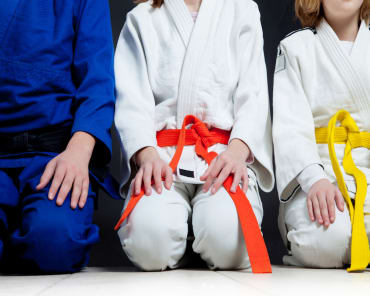
Brazilian Jiu-Jitsu (BJJ) is a martial art that has gained global popularity for its effectiveness in self-defense and mixed martial arts (MMA). The history of BJJ is a rich tapestry that weaves together elements from Japanese martial arts, Brazilian innovation, and a dedication to technique and leverage. Here, we explore the origins and evolution of this fascinating martial art.
Origins: From Japan to Brazil
The roots of Brazilian Jiu-Jitsu can be traced back to the Japanese martial art of Jujutsu, which was practiced by the samurai as a method of self-defense when disarmed. Jujutsu encompassed a variety of techniques, including joint locks, throws, and ground grappling.
In the late 19th and early 20th centuries, Judo, a sport derived from traditional Jujutsu, began to gain prominence in Japan. Jigoro Kano, the founder of Judo, emphasized throws and ground fighting, or "ne-waza." One of Kano's students, Mitsuyo Maeda, became instrumental in the spread of Judo and its grappling techniques outside Japan.
Maeda, also known as "Count Koma," traveled extensively to demonstrate and teach Judo. In 1914, he arrived in Brazil, where he met Gastão Gracie, a businessman who helped Maeda settle in the country. In gratitude, Maeda began teaching Judo to Gastão’s sons, particularly Carlos Gracie.
The Gracie Influence
Carlos Gracie, along with his brother Hélio Gracie, adapted and refined the techniques they learned from Maeda. Hélio, in particular, had a smaller and weaker physique, which led him to modify techniques to rely more on leverage and less on strength. This adaptation became the foundation of Brazilian Jiu-Jitsu.
The Gracie family began to teach and promote BJJ through their academy in Rio de Janeiro. They developed a system that emphasized ground fighting, submissions, and positional control. The Gracie brothers also engaged in public challenges, known as "vale tudo" (anything goes) matches, to prove the effectiveness of their art. These matches helped popularize BJJ in Brazil and demonstrated its superiority in real combat situations.
Evolution and Global Expansion
In the latter half of the 20th century, BJJ continued to evolve and gain popularity. The Gracie family played a significant role in its dissemination, with members such as Rickson Gracie, Royce Gracie, and Rorion Gracie becoming prominent figures in the martial arts world.
Rorion Gracie moved to the United States in the 1970s and began teaching BJJ in California. In 1993, he co-founded the Ultimate Fighting Championship (UFC), a platform designed to showcase the effectiveness of BJJ against other martial arts. Royce Gracie's dominance in the early UFC events brought international attention to BJJ and established it as a foundational art in MMA.
BJJ academies began to spring up around the world, with practitioners refining techniques and developing new ones. Competitions such as the World Jiu-Jitsu Championship (Mundials) and the Abu Dhabi Combat Club (ADCC) Submission Wrestling World Championship provided platforms for practitioners to test their skills in a sport setting.
Modern BJJ
Today, Brazilian Jiu-Jitsu is practiced globally, with millions of practitioners and thousands of academies. It has become a staple in MMA training and continues to evolve through the contributions of athletes, instructors, and enthusiasts.
Modern BJJ encompasses both gi (traditional uniform) and no-gi (without uniform) styles, each with its own techniques and strategies. The sport has also seen the rise of various guard positions, submission techniques, and innovations in training methodologies.
Conclusion
The history of Brazilian Jiu-Jitsu is a story of adaptation, innovation, and resilience. From its Japanese roots to its Brazilian refinement and global expansion, BJJ has become a dynamic and influential martial art. As it continues to evolve, BJJ remains a testament to the power of technique, leverage, and the human spirit's quest for improvement. Whether practiced for self-defense, competition, or personal growth, BJJ offers a rich legacy and a promising future.






